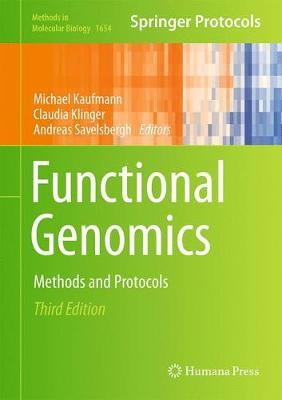
Третье издание книги "Functional Genomics. Methods and Protocols"
 В издательстве Humana Press вышла книга Functional Genomics. Methods and Protocols (2017). Это третье издание сборника методов и протоколов. Одна из глав данной книги написана заведующим Лабораторией клеточного деления кбн Пиндюриным АВ
В издательстве Humana Press вышла книга Functional Genomics. Methods and Protocols (2017). Это третье издание сборника методов и протоколов. Одна из глав данной книги написана заведующим Лабораторией клеточного деления кбн Пиндюриным АВ
Pindyurin AV. Genome-wide cell type-specific mapping of in vivo chromatin protein binding using an FLP-inducible DamID system in Drosophila
Аннотация книги: Reflecting developments in genome editing, this third edition volume fully updates a collection of key techniques for the study of functional genomics. The book is broken up into sections on bioinformatics, DNA, RNA, and protein analysis, as well as a closing section entitled “From Genotype to Phenotype.” Written in the highly successful Methods in Molecular Biology series format, chapters include introductions to their respective topics, lists of the necessary materials and reagents, step-by-step, readily reproducible laboratory protocols, and tips on troubleshooting and avoiding known pitfalls.
Аннотация главы 7: A thorough study of the genome-wide binding patterns of chromatin proteins is essential for understanding the regulatory mechanisms of genomic processes in eukaryotic nuclei, including DNA replication, transcription, and repair. The DNA adenine methyltransferase identification (DamID) method is a powerful tool to identify genomic binding sites of chromatin proteins. This method does not require fixation of cells and the use of specific antibodies, and has been used to generate genome-wide binding maps of more than a hundred different proteins in Drosophila tissue culture cells. Recent versions of inducible DamID allow performing cell type-specific profiling of chromatin proteins even in small samples of Drosophila tissues that contain heterogeneous cell types. Importantly, with these methods sorting of cells of interest or their nuclei is not necessary as genomic DNA isolated from the whole tissue can be used as an input. Here, I describe in detail an FLP-inducible DamID method, namely generation of suitable transgenic flies, activation of the Dam transgenes by the FLP recombinase, isolation of DNA from small amounts of dissected tissues, and subsequent identification of the DNA binding sites of the chromatin proteins.
